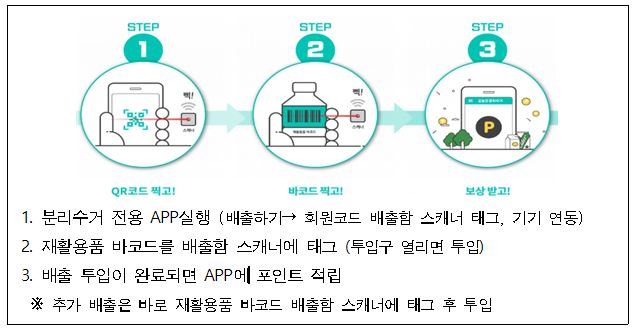– Introduction of three new smart city services using cutting-edge ICT technologies such as robots, AI, and IoT
– 'Autonomous driving robot' patrols Children's Grand Park and Tancheon Trail to detect and notify emergency situations and prevent daily life
– Monitoring and warning of illegally parked vehicles entering the EV charging area with IoT sensors in Geumcheon-gu
– Reinforcement of household waste recycling rate by installing IoT-based transparent PET bottle separation box in Mapo-guen
□ The Seoul Metropolitan Government will introduce smart city services based on cutting-edge ICT technologies such as robots, artificial intelligence (AI) and Internet of Things (IoT) to solve everyday problems of citizens such as crime prevention patrols, detection of illegal parking, and separation of household waste.
○ 'Smart City Service' refers to a smart service that uses the latest ICT such as robots, artificial intelligence (AI) and the Internet of Things (IoT) to solve urban problems in citizens' lives and to support citizens to enjoy a convenient and pleasant life. .
○ In the meantime, if smart city services such as smart poles, smart crosswalks, and smart security have been mainly introduced to facilities such as street lights, CCTV, and crosswalks to increase the convenience of citizens such as preventing traffic accidents and loneliness, now the scope of application of the technology has been expanded. wider
□ From tomorrow (February 2.21), you can meet the 'autonomous driving robot' that travels on four wheels at Children's Grand Park in Gwangjin-gu and Tancheon Dulle-gil in Songpa-gu. When the robot patrols the park and the surrounding streets, artificial intelligence (AI) detects dangerous situations such as screams and fires, and the Internet of Things (IoT) notifies the control room of emergency situations with voice and siren. The robot is also responsible for disinfection tasks in daily life, such as spraying disinfectant, disinfecting ultraviolet rays, and checking temperature.
□ In Geumcheon-gu, an Internet of Things (IoT) sensor monitors ordinary vehicles parked illegally in an electric vehicle charging area and provides a service to inform them of illegal parking through voice guidance and warning lights. In Mapo-gu, in order to increase the recycling rate of transparent plastic bottles, the Internet of Things (IoT)-based transparent plastic bottles are being separated and discharged.
□ The Seoul Metropolitan Government announced that it has started operating these three smart city services, ① 'autonomous driving patrol robot' service, ② 'electric vehicle charging area monitoring' service, and ③ 'IoT transparent plastic bottle separation box' service.
□ First, the 'autonomous driving patrol robot' is a service that combines various ICT technologies such as robots, artificial intelligence (AI) and the Internet of Things (IoT). It is 751mm wide, 1,102mm long, and 1,077mm high. In the event of an emergency in public places, accidents and crimes are prevented through rapid response, supporting citizens to use the park more safely even at night time, and supplementing patrol and quarantine tasks.
○ In addition to crime prevention patrols and daily life quarantine duties by walking around parks and trails, information on exiting at night (10 pm to 5 am) and precautions when using facilities are also provided.
※ (Example) Voice guidance function
Hello. It is a self-driving patrol robot in Seoul. Children's Grand Park closes at 10pm. After a while, the lights will be turned off, and the operation of convenience facilities will end. Please return home safely.
□ Two cars are operated, one each at Children's Grand Park in Gwangjin-gu and Tancheon Dulle-gil in Songpa-gu, which are popular with citizens for rest and exercise such as walking and jogging.
□ This self-driving patrol robot was approved as a special demonstration area for the “regulatory sandbox” that suspends or exempts legal regulations under certain conditions so that new industries and technologies can be applied (Ministry of Trade, Industry and Energy, 2021.12.30.) has been able to implement
○ According to related laws such as the Pedestrian Safety Act, robots are classified as cars and cannot be operated on sidewalks.
※ (Example) Improvements to regulations
Under the Road Traffic Act, it is a 'car', so it is allowed to restrict the use of robots in sidewalks, crosswalks, parks, etc.
Relief of “required accompaniment of safety personnel when driving the robot”, an additional condition of the outdoor autonomous driving robot’s sandbox
□ The city is operating robots such as multi-environment detection and artificial intelligence (AI) incident/accident recognition, while upgrading services to accelerate the commercialization of autonomous robot services, and is expected to contribute to responding to the increased demand for non-face-to-face services due to COVID-19. there is.
○ The collected driving data will be used as basic data to improve the legal regulation of autonomous driving robots.
□ Second, in the 'Electric Vehicle Charging Area Monitoring' service, the Internet of Things (IoT) parking detection sensor recognizes the number of the vehicle that entered the parking area through the Ministry of Environment vehicle number inquiry and checks whether it is an electric vehicle or not, and if it is a non-electric vehicle, illegal parking It is a service that informs you that “This is an electric vehicle charging area. Please park in a different area” and a warning light is turned on to indicate illegal parking.
○ This is an expanded application of the 'Parking Area Monitoring for Disabled Persons' service currently in place in Yangcheon-gu and Gangnam-gu to the prevention of illegal parking in electric vehicle charging areas.
□ Implemented in 4 electric vehicle charging areas of Geumcheon-gu Office and public parking lots in Geumcheon-gu (Doksan 4-dong, Siheung 10-dong, multi-purpose).
□ The city expects this service to contribute to securing an electric vehicle charging area, improving the convenience of charging electric vehicle drivers, and improving the charging area parking culture. In fact, as a result of implementing this service for one month in December last year, it was confirmed that 80% of vehicles (530 out of 425) immediately exited within 5 minutes after receiving warning lights and voice guidance, confirming that the guidance was effective.
○ As of August of last year, the number of electric vehicles in Seoul exceeded 8, and while the number of charging facilities is continuously increasing, electric vehicle charging areas are suffering from disorderly parking and illegal parking of general vehicles. Various complaints have been filed as a result of this.
※ Electric vehicle related situation
City possesses electric vehicles (January 19.1 - 9,571 units, January 20.1 - 15,353 units, August 21.8 - 31,220 units)
A large number of vehicles illegally parked and stopped without realizing that the area is subject to a fine (10 won, the Act on the Promotion of Development and Distribution of Eco-Friendly Vehicles) for parking and stopping in an electric vehicle charging area for general vehicles.
□ Third, the 'IoT transparent plastic bottle separation bin' is an Internet of Things (IoT)-based separation bin. If you throw away the transparent plastic bottle here, install the dedicated mobile app (today's separate collection) and scan the QR code, you will earn points in my app. It is expected that the recycling rate of transparent plastic bottles as eco-friendly raw materials will be increased to expand the effect of recycling of household waste resources.
○ Deep learning technology is applied to the built-in camera attached to the separation box, so when the PET bottle is recognized, the inlet is automatically opened and closed.
□ Citizens earn 1 points for each PET bottle in the app, and use the accumulated points to purchase items at convenience stores, etc. When you collect 10 points, you can purchase 100ml of milk, and with 200 points, you can purchase pizza and upcycling T-shirts.
○ In addition, the amount of PET bottle collection is transmitted online, allowing the administrator to check immediately.
□ In Mapo-gu, a total of 1 units were installed in single-person households, in areas where young people are concentrated and on the move, in universities, public libraries, youth housing, and art centers.
○ Although transparent waste plastic bottles are eco-friendly raw materials that can produce long fibers, their recycling rate is low. As plastic consumption continues to increase due to an increase in single-person households and mixed families in their 20s and 30s, separate waste bins were installed in places frequently used by young people.
Effect of resource circulation of transparent PET bottle separation and discharge agent (provided by Ministry of Environment)
․ Able to secure 10 tons of domestic high-quality recycled raw materials per year
․ 500 bottles of 12ml transparent plastic bottles can produce regular T-shirts, and 32 bottles can produce long-sleeved functional jackets.
□ Park Jong-su, Seoul Smart City Policy Officer, said, “The city of Seoul is actively discovering and promoting smart city services to solve various safety and environmental problems that occur in the living environment of citizens through cutting-edge ICT technology.” We will expand our highly efficient services throughout the city to make Seoul a safer and more convenient smart city.”
Attach
Smart city service for citizens to feel
Self-driving patrol robot service
○ installation photo
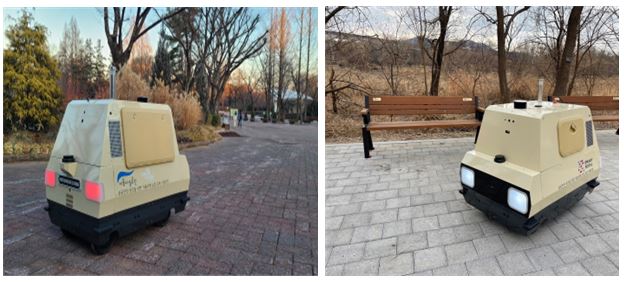
< Children's Grand Park, Gwangjin-gu > < Tancheon Dulle-gil, Songpa-gu >
○ Service diagram
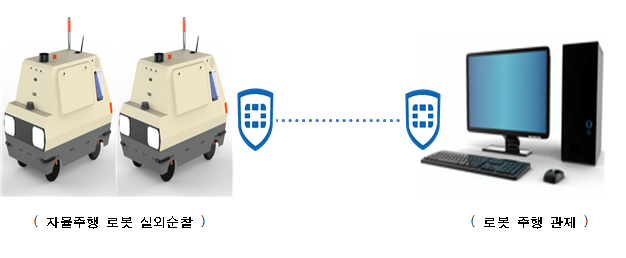
Electric vehicle charging area monitoring service
○ Installation photo (Public parking lot, Doksan 4-dong, Geumcheon-gu)
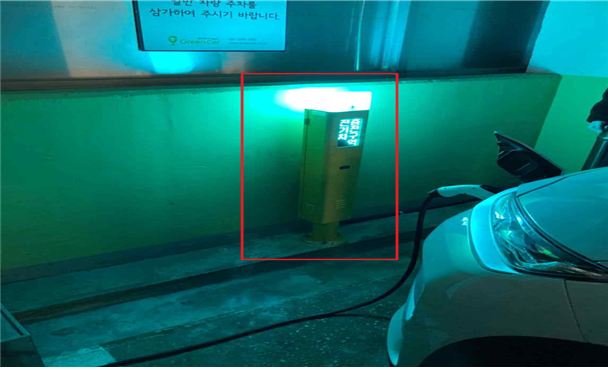
※ Installation location: 10 parking areas in Geumcheon-gu
‧ Geumcheon-gu Office (7), multi-purpose public parking lot (1), Doksan 4-dong public parking lot (1), Siheung 4-dong public parking lot (1)
○ Service diagram
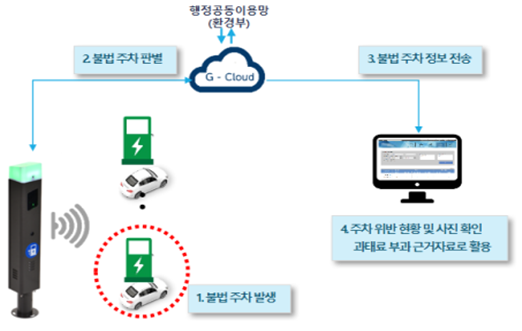
IoT Transparent PET Bottle Separation Disposal Box Service
○ Installation photo (Mapo Central Library B1 in front of E-Mart 24)
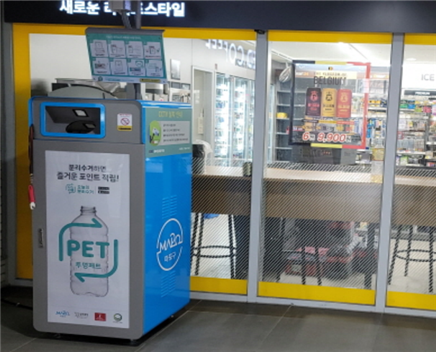
※ Installation location: 10 locations in Mapo-gu
‧ Mapo Art Center, Sinchon E-Land PEER Youth Housing, Hongik University Dormitory, Sogang University Woojungwon, Mapo-gu Office, Mapo Central Library, Mapo-gu Citizens Sports Center, Yeomni District 2 Residents’ Convenience Facility, Community Center (Hapjeong-dong, Dohwa-dong)
○ How to use
